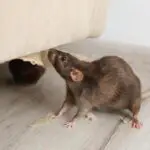Do Rats Burrow in Raised Beds?
One of the most common questions that gardeners ask is, “Do rats burrow in raised beds?” However, a raised bed is not the only place rats can burrow in. The ground beneath the beds is a prime rat habitat, and weeds and other vegetation that grows close to the ground should be trimmed or removed. You should also store firewood and lumber on a raised platform that’s at least 18 inches above ground. If you plan to store lumber on the ground, be sure to stack it a foot or two away from the nearest fence line or wall.
Rats don’t like raised beds, so they usually dig in any dirt they can get their teeth into. If you suspect that you have a rat problem in your raised bed, here are some tips for getting rid of them: first, fill the burrow. Unlike other garden pests, rats have distinctive burrowing patterns. Rat burrows have a smooth, well-packed entrance and a fan-shaped pattern of loose dirt outside the entrance. The dirt outside the entrance is created by rats excavating it.
Secondly, you can check for the size of the holes to see if rats are using the space as a burrow. Rat burrows tend to be larger than insect holes and are around 2 to 4 inches in diameter. You can also check for the presence of loose dirt outside the burrows. Rats prefer to burrow in cultivated ground because it’s easier to dig in. They also love anonymity, and will try to hide their burrow entrances. You can also look for a hole about 8 centimeters in diameter, or a small pile of excavated soil next to the hole.








